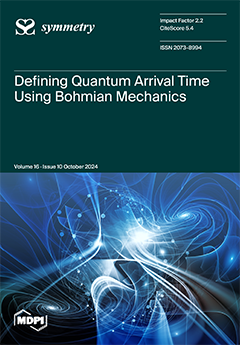In this paper, the final stage of the Petrov classification is carried out. As it is known, the Killing vector fields specify infinitesimal transformations of the group of motions of space
. In the case where the group of motions
[...] Read more.
In this paper, the final stage of the Petrov classification is carried out. As it is known, the Killing vector fields specify infinitesimal transformations of the group of motions of space
. In the case where the group of motions
acts in a simply transitive way in the homogeneous space
, the geometry of the non-isotropic hypersurface is determined by the geometry of the transitivity space
of the group
. In this case, the metric tensor of the space
can be given by a nonholonomic reper consisting of three independent vectors
, which define the generators of the group
of finite transformations in the space
. The representation of the metric tensor of
spaces by means of vector fields
has a great physical meaning and makes it possible to substantially simplify the equations of mathematical physics in such spaces. Therefore, the Petrov classification should be complemented by the classification of vector fields
connected to Killing vector fields. For homogeneous spaces, this problem has been largely solved. A complete solution of this problem is presented in the present paper, where I refine the Petrov classification for homogeneous spaces in which the group
, which belongs to type
according to the Petrov classification, acts simply transitively. In addition, this paper provides the complete classification of vector fields
for space
in which the group
acts simply transitivity on isotropic hypersurfaces.
Full article





